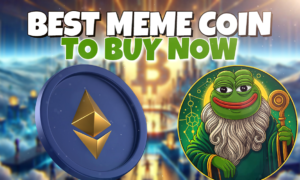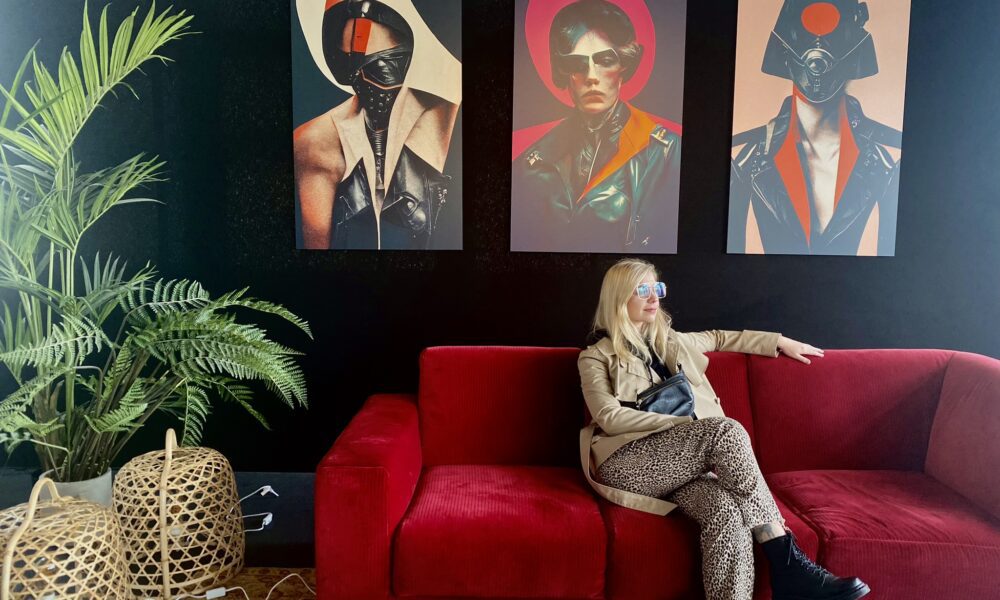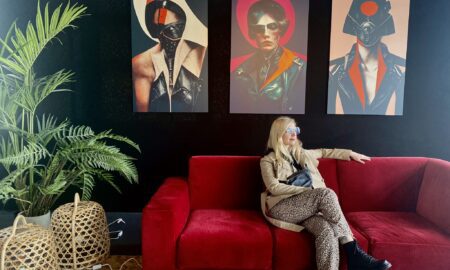Paul Travers, founder and CEO of Vuzix, has spent decades pioneering wearable tech, evolving Vuzix from early video eyewear to a leader in enterprise-focused AR smart glasses. With a mission to enhance productivity, safety, and connectivity through cutting-edge optics, Vuzix stands apart for its proprietary waveguide technology and full-scale OEM capabilities. Now, backed by a $20 million strategic partnership with Quanta Computer, Vuzix is positioned not just as an innovator, but as a key enabler of mass-market smart glasses, delivering scalable, AI-ready solutions at the forefront of the augmented reality revolution. Find out more in this exclusive interview with TechBullion.
Please tell us about yourself and your role, and for those unfamiliar with Vuzix, provide an overview of the company’s core mission, its journey so far, and what distinguishes its smart glasses technology in the augmented reality space.
Paul: I’m Paul Travers, founder and CEO of Vuzix. I started Vuzix with the vision of developing wearable display solutions that enhance how people work, communicate, and interact with information. Over the years, we’ve evolved from pioneering virtual reality and video eyewear to becoming a leader in augmented reality smart glasses, helping enterprises and consumers access critical data hands-free and in real time.
Our core mission is to deliver cutting-edge AR wearable solutions that empower people to be more productive, connected, and safe, with a journey that has really brought us to where we are today, with a diversified portfolio of enterprise-grade smart glasses deployed in industries like manufacturing, healthcare, logistics, and field service. I think what truly sets us apart is our deep expertise in optics and waveguide technology, to that end, we are a full-scale OEM with a one-of-a-kind waveguide manufacturing facility in New York State. Our smart glasses leverage our advances in waveguide technology, delivering a product portfolio that’s lightweight, ergonomic, and designed for all-day wear, providing seamless AR experiences without compromising comfort. We work with a growing roster of ODM and direct OEM customers who are integrating our optics into their own smart glasses platforms.
Ultimately, we’re enabling organizations to transform their workflows and embrace the future of connected work.
Let’s pivot to the big picture. Last September, you announced a $20 million strategic investment from Quanta Computer, one of the world’s largest ODMs. What was the significance of securing this partnership and investment, and how did it change Vuzix’ trajectory in the AR market?
Paul: This was a pivotal moment for Vuzix. The $20 million strategic investment from Quanta wasn’t just financial backing, it was validation of our waveguide technology and our long-term vision for developing the backbone of the AR industry. Quanta saw the same thing we did, that smart glasses are becoming the next-generation computing platform, augmenting and then eventually replacing smartphones over time. To get there, the world will need high-performance, low-cost optical components at scale. Vuzix is one of the only companies that can manufacture waveguides at high volume and low cost today. This partnership accelerated our transition from R&D to OEM production and now opens the door to a much broader potential supplier ecosystem.
In addition to our other ODM and OEM customers, Quanta is helping us expand our reach into mass-market smart glasses platforms. We’re now positioned not as a niche AR company, but as a core supplier to the broader smart glasses market, with Quanta as a strategic anchor.
Fast forward – you’ve successfully achieved the production and yield targets that triggered Quanta’s second $5 million investment. Can you walk us through what specific milestones you hit and what this says about Vuzix’ execution capabilities?
Paul: The second tranche was tied to real-world manufacturing performance including achieving specific yield and volume requirements, not just projections. We demonstrated high-volume production yields, consistent run-to-run repeatability, and on-time delivery of optics into Quanta’s development programs. The ability to manufacture at a high volume with substantial yield, are really the metrics that matter for OEMs. It proves Vuzix can execute at scale, meeting the quality, volume, and cost targets required for global smart glasses adoption. And it reinforces that our proprietary processes are production-ready and scalable now, not years down the road. These results aren’t solely validated by Quanta, but by other ODM and OEM customers as well, further reinforcing our leadership in scalable AR optics.
With Quanta’s backing, you’ve stated the goal of delivering ‘the world’s most affordable, lightweight, and performance-driven AI smart glasses for mass-market adoption.’ How does this partnership position Vuzix differently from competitors like Meta or Apple in the race for consumer AR dominance?
Paul: Meta and Apple are building closed ecosystems that compete against each other. Vuzix will offer waveguides to companies like Meta, Apple and others that are delivering smart glasses into those ecosystems and at the same time Vuzix is enabling an open one. We’re not trying to be the consumer brand and control the end-user experiences. Similar to the car manufacturing environment, as the smart glasses industry continues to evolve, we would eventually empower dozens and or hundreds of OEMs to launch their own smart glasses platforms, moving the entire AR wearable industry forward with optics technology that’s accessible to the masses.
Quanta and other ODM/direct OEM customers are working with us to deliver modular, scalable waveguide and display engine platforms that they can build around. It’s the Android model for smart glasses. This makes us indispensable to the mass market in a way vertically integrated players can’t be.
Quanta is one of the world’s largest ODMs with $35 billion in revenue. How is their manufacturing expertise and global scale transforming your waveguide production capabilities, and what does this mean for your ability to meet potential mass-market demand?
Paul: Quanta brings world-class manufacturing scale and process refinement to the table, and together we’ve been able to optimize throughput, reduce variation, and build the playbook for mass production. As a leading ODM, Quanta is opening new doors for Vuzix on the OEM front to support the mass market and growing demand.
This partnership means we’re not just prepared for scale, we’re already actively building toward it. Our ability to meet the waveguide demand for tens of millions of units (and eventually hundreds of millions of units) is no longer theoretical. It’s real.
This brings Quanta’s total investment to $15 million of a planned $20 million. How is this strategic capital different from traditional venture funding, and how does having a manufacturing partner as an investor change your approach to scaling the business?
Paul: Unlike traditional VC, this capital is tied directly to execution. Each tranche is unlocked by hitting real production and technical milestones. It’s not speculative, it’s earned.
More importantly, Quanta is not just a financial partner, they’re a manufacturing engine with a long history of manufacturing products in volume. This changes our scaling model. We can stay capital-efficient and focused on innovation, while leveraging Quanta’s infrastructure to ramp production rapidly as demand grows.
The partnership focuses on ‘co-development of new AR/AI smart glasses technologies.’ With AI being the dominant tech trend, how are you and Quanta integrating AI capabilities into your next generation of smart glasses, and what applications do you see driving adoption?
Paul: AI is central to everything we’re doing. Our next-gen glasses are designed to support AI at the edge and in the cloud. We’re building the ideal platform for computer vision, speech interfaces, contextual awareness, and integration with AI assistants.
Use cases are emerging fast as well: logistics, remote support, training, real-time translation, object recognition, Quality Assurance, and content capture. Enterprise adoption is reenergized with AI capabilities in smart glasses, and consumer use cases are right behind it. AI transforms glasses from displays into assistants; and that’s what will drive mass adoption.
What makes you confident that the market is ready for mass-market AI-powered smart glasses, and how does your partnership with Quanta help you capitalize on this timing?
Paul: The ecosystem is aligning. AI is being used today. Optics from Vuzix are ready to bring displays to consumers. Devices are wearable. And consumer behavior has already shifted with smartwatches. Glasses are next.
With Quanta, and other ODM/OEM customers, we’re hitting the market at exactly the right time, with scale, reference designs, and proven manufacturing. It’s the perfect match of timing and capability.
Vuzix holds over 450 patents in optics and AR technologies. How does your intellectual property portfolio, combined with Quanta’s manufacturing capabilities, create a sustainable competitive advantage in what’s becoming a crowded market?
Paul: Our IP covers everything from waveguide manufacturing to optical performance and device-level integration. It gives us a strong competitive advantage and establishes a highly defensible position in the market.
Combine that with Quanta’s global production capacity, and you get something very few companies can offer. That is, proprietary, protected tech that can be delivered at mass-market scale. That’s a tough combination to compete with.
You mentioned ‘significant revenue potential’ from this partnership in the coming years. Can you provide insight into the scale of opportunity this represents, and are there plans to expand the partnership beyond smart glasses into other AR applications or markets?
Paul: The opportunity in front of us is enormous. Even early-stage smart glasses adoption could mean tens of millions of units per year with hundreds of millions of units down the road. And we expect to supply waveguides and optical engines into a meaningful share of that volume.
Quanta and Vuzix are engaged with multiple projects each focused on their respective OEM customers, and Vuzix waveguides are to be integrated into those platforms. Beyond smart glasses, we see future opportunities in helmets, visors, aerospace, automotive AR, and more. The waveguides we build today are just the beginning, and our OEM capabilities mean the firms partnering with us can see waveguide prototypes with turnaround times that are a fraction of what others in the space can offer.
This isn’t a one-off product partnership, it’s a long-term platform opportunity that includes joint new product development, market outreach and integration of our supply chains, with Vuzix being a key component supplier of waveguides.



































